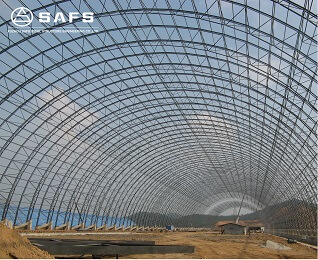Dapeng Town Industrial Park, Tongshan District, Xuzhou City, Jiangsu Province, China
At the turn of the new century and especially the new decade, alarming levels of climate change, global warming, depleting natural resources, and increasing pollution have necessitated an urgent shift towards cleaner and greener resources in prime economic activities. The construction sector for instance, which is a vital activity in a fast-growing economy, is responsible for around 4% of particulate emissions and thousands of noise complaints every year.
Steel is strong yet lightweight, allowing engineers and architects to design for safety without causing undue pressure on the foundation, not to forget the environmental impact of the build. The Use of light, prefabricated steel for construction means they are easier to move around, reducing transportation, fuel use, and the timeline for project completion.

Space Frame Coal-Fired Power Plant Arch Dry Shed
For occupants, a well-insulated steel building is energy efficient, consuming almost half the electricity required for heating and cooling, compared to buildings constructed with conventional materials like bricks, concrete, etc.
A major benefit of steel is its ability to withstand natural disasters and harsh weather conditions. In case of an earthquake, the structure may bend, but it won’t crack or collapse, thus giving more time to occupants to evacuate. Also, in earthquake-prone areas, falling debris is a major safety hazard. A steel frame building can protect its occupants from being buried under debris.